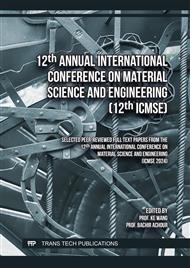p.71
p.77
p.83
p.91
p.99
p.107
p.117
p.123
p.133
Simulation and Experimental Study of the Explosion of A Small High-Light Detonation Bomb
Abstract:
In order to carry out the analysis of the use safety of a small high-light detonation bomb, a simulation model of the bomb's explosive body was established based on the LS-DYNA platform. By simulating the burst process through LS-DYNA, the fragmentation distribution pattern and velocity variation were studied, and the kill radius of the projectile was evaluated. The results show that the bullet fragmentation size distribution is not uniform, and the large mass of low-velocity fragments generated in the middle of the explosive body is the main source of kill, and the kill radius is less than 1m. This study lays a theoretical foundation for the development and application of small high-light detonation bomb, and has a certain reference value for the research and design of the same type of ammunition.
Info:
Periodical:
Pages:
99-106
Citation:
Online since:
June 2025
Authors:
Price:
Сopyright:
© 2025 Trans Tech Publications Ltd. All Rights Reserved
Share:
Citation:



